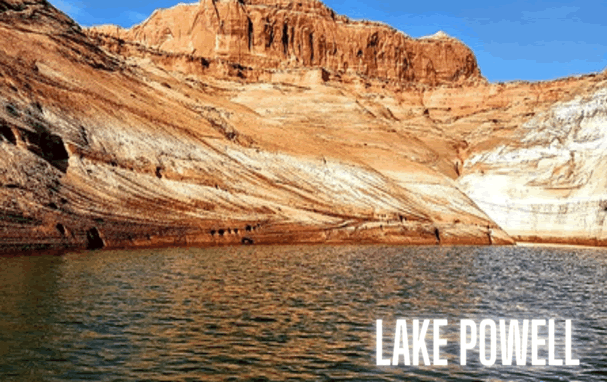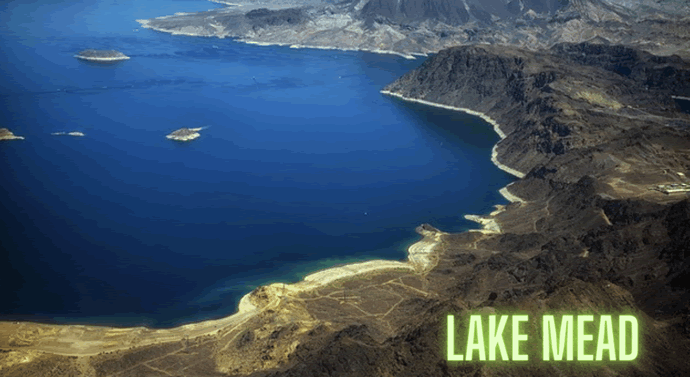Lake Mead Lake Powell Water Levels, Ecosystems & More Quiz
The health of water levels in Lake Mead and Lake Powell, two of the largest reservoirs in the United States, has a profound impact on the surrounding ecosystem and water supply in the region. Understanding the factors influencing these levels and their consequences is essential for addressing current and future challenges.
Lake Mead and Lake Powell, located in the western United States, are vital sources of freshwater for the region. The fluctuation of their water levels is a growing concern due to its impact on various aspects of human life and the environment.
Importance of water levels
The water levels of Lake Mead and Lake Powell were of significant concern due to persistent drought conditions in the southwestern United States. Both lakes are crucial reservoirs along the Colorado River, supplying water to millions of people and supporting agriculture in the region.
Lake Mead, located near Las Vegas, Nevada, had been experiencing declining water levels for years, reaching historically low levels. These low levels triggered water shortage declarations and led to water use restrictions for some states that rely on the Colorado River for their water supply.
Similarly, Lake Powell, situated along the Arizona-Utah border, faced challenges with diminishing water levels. It serves as a key storage reservoir for managing water resources in the region.
Efforts to address the water crisis in the Colorado River Basin have included conservation measures, water management agreements among states, and ongoing monitoring of water levels and usage. However, the situation remains precarious, highlighting the need for sustainable water management practices and adaptation to changing climate conditions.
Factors influencing water levels
-
Precipitation: The amount and distribution of rainfall and snowfall in the Colorado River Basin directly impact the inflow into these lakes. Below-average precipitation exacerbates drought conditions and leads to reduced water levels.
-
Snowpack: Snowpack in the Rocky Mountains serves as a crucial water source for the Colorado River system. The rate of snow accumulation and the timing of snowmelt affect the volume of water flowing into Lake Powell, especially during the spring and summer months.
-
Temperature: Warmer temperatures can increase evaporation rates from the surface of the lakes, leading to more water loss. Additionally, higher temperatures can influence the timing and intensity of snowmelt, affecting the seasonal inflow into the reservoirs.
-
Climate Change: Long-term changes in climate patterns, including rising temperatures and altered precipitation patterns, contribute to prolonged drought conditions and reduced water availability in the Colorado River Basin.
-
Water Demand: The demand for water from municipalities, agriculture, and industry affects the allocation of water from Lake Mead and Lake Powell. Increased water withdrawals for various purposes can strain the available water supply and further reduce water levels.
-
Reservoir Management: Decisions regarding water release and storage operations, made by agencies such as the Bureau of Reclamation, can impact the water levels of these reservoirs. Managing releases to meet various needs while maintaining adequate storage levels is a complex balancing act, particularly during times of drought.
-
Water Conservation Efforts: Conservation measures implemented by states, municipalities, and water users can help reduce overall water demand and mitigate the effects of drought on water levels. Efforts such as water recycling, efficiency improvements, and drought-tolerant landscaping contribute to water conservation.
-
Policy and Regulation: Water allocation agreements, interstate compacts, and federal regulations play a significant role in managing water resources in the Colorado River Basin. Adherence to these agreements and regulations affects how water is distributed among stakeholders and can influence water levels in Lake Mead and Lake Powell.
These factors interact in complex ways to determine the water levels of Lake Mead and Lake Powell, highlighting the need for comprehensive water management strategies that consider both short-term conditions and long-term sustainability.

Current situation
Over the years, water levels in Lake Mead and Lake Powell have decreased significantly, reaching alarming levels. This trend has major implications for the region, including environmental and socio-economic challenges.
Environmental consequences
The declining water levels in Lake Mead and Lake Powell, as well as the broader environmental consequences in the Colorado River Basin, have several significant impacts:
-
Ecosystem Disruption: Lower water levels can disrupt aquatic ecosystems in the lakes and downstream areas. Habitat loss, changes in water quality, and alterations to flow regimes can harm fish populations, riparian vegetation, and other aquatic species.
-
Loss of Biodiversity: Reductions in water availability can lead to the loss of habitat and biodiversity in the Colorado River Basin. Endangered species such as the humpback chub, razorback sucker, and southwestern willow flycatcher are particularly vulnerable to habitat degradation caused by dwindling water levels.
-
Decline in Riparian Areas: Riparian ecosystems along the Colorado River and its tributaries rely on regular flooding and water availability. Decreased water levels can lead to the drying of wetlands, loss of riparian vegetation, and changes in the structure and function of these ecosystems.
-
Impact on Wildlife: Reduced water levels affect wildlife populations that depend on riparian habitats for breeding, foraging, and migration. Species such as birds, mammals, and amphibians may face challenges in finding food and suitable habitat, leading to declines in population numbers.
-
Water Quality Concerns: Concentrated pollutants and contaminants in shrinking water bodies can lead to degraded water quality. Higher concentrations of pollutants, such as heavy metals and agricultural runoff, pose risks to aquatic life and human health.
-
Increased Fire Risk: Drier conditions resulting from reduced water availability increase the risk of wildfires in the region. Lower water levels limit the capacity for firefighting efforts and can exacerbate the intensity and spread of wildfires, impacting both natural ecosystems and human communities.
-
Economic Impacts: The environmental consequences of declining water levels can have economic repercussions, affecting industries such as tourism, recreation, agriculture, and fisheries. Diminished water resources can lead to reduced agricultural productivity, loss of revenue from recreational activities, and challenges for businesses reliant on a healthy environment.
-
Social and Cultural Impacts: Indigenous communities, as well as non-Indigenous populations, have cultural and spiritual ties to the Colorado River and its tributaries. Environmental changes resulting from declining water levels can disrupt traditional practices, cultural heritage sites, and community well-being.
Addressing these environmental consequences requires comprehensive strategies for water management, conservation, and adaptation to changing conditions. Collaboration among stakeholders, including government agencies, Native American tribes, conservation organizations, and the public, is essential to mitigate the impacts of declining water levels in Lake Mead, Lake Powell, and the broader Colorado River Basin.
Implications for water supply
-
Water Shortages: Decreased water levels in these reservoirs can lead to water shortages for communities, agriculture, and industries that rely on the Colorado River for their water supply. Reduced storage capacity limits the availability of water for irrigation, municipal use, and hydropower generation.
-
Water Rationing: Water shortage conditions may necessitate the implementation of water rationing measures, including restrictions on outdoor water use, limits on agricultural irrigation, and adjustments to municipal water allocations. These measures aim to conserve water and ensure that essential water needs are met during periods of scarcity.
-
Impact on Agriculture: Lower water availability can have significant impacts on agricultural production in the region. Farmers may face challenges in irrigating crops, leading to reduced yields, shifts in crop selection, and economic losses for agricultural industries dependent on water from the Colorado River.
-
Municipal Water Supplies: Municipalities may need to implement conservation measures, invest in water efficiency technologies, and explore alternative water sources to meet the demand for drinking water and sanitation services. Diversification of water supplies, including groundwater extraction and water recycling, becomes increasingly important during periods of water scarcity.
-
Hydropower Generation: Declining water levels in Lake Mead and Lake Powell reduce the capacity for hydropower generation at hydroelectric facilities along the Colorado River. This can impact the reliability of electricity supply and increase reliance on alternative energy sources during periods of low water availability.
-
Economic Impact: Water scarcity can have far-reaching economic consequences, affecting industries, businesses, and employment opportunities in the region. Reduced agricultural productivity, increased costs for water treatment and delivery, and constraints on hydropower generation can all contribute to economic challenges for communities reliant on Colorado River water.
-
Interstate Water Allocation: The management of water resources in the Colorado River Basin involves complex agreements and allocations among multiple states and stakeholders. Water shortages can strain interstate water-sharing agreements, leading to disputes over water rights and allocation priorities.
-
Long-Term Sustainability: Addressing water supply challenges requires a holistic approach to water management that considers long-term sustainability and resilience to climate change. Investments in water conservation, infrastructure upgrades, watershed restoration, and collaborative water management efforts are essential for ensuring the continued availability of water resources in the Colorado River Basin.
Recreational impacts
Lower water levels also affect recreational activities such as tourism and water sports. Visitors to Lake Mead and Lake Powell may notice changes in landscapes and recreational opportunities.
Management efforts
Collaborative management initiatives are in place to mitigate the effects of declining water levels. This includes adopting adaptive management strategies to address changing challenges.
Future prospects
It is crucial to consider long-term solutions to ensure the sustainability of Lake Mead and Lake Powell. This may involve technological innovations, improved management practices, and increased awareness of water conservation.
Conclusion
The water levels of Lake Mead and Lake Powell are a crucial indicator of environmental health and ecosystem resilience in the western United States. By understanding the factors influencing these levels and implementing effective management strategies, we can work together to ensure a sustainable future for these valuable water resources.
Fun games with dinosaurs & math problems.
Fun with the zombies while solving problems.
Test your memory & match problems and answers.
Math games with crocodiles.
Basketball games k-7 games.
Avoid the snakes, earn points playing.
War themed elearning games
Fun animal jungle board games
Collection of games on multiplication.
Learn adding numbers online.
Learn to tell the time with fun.
Math games for kinder to 7th grade
War board game on fractions for kids.
Fraction of a number game online
Wheel of fortune fractions game
Multiplication of two fractions spin the wheel.
Spin the wheel game on fractions of numbers.
Wheel spin convert fractions to decimals.
Fractions shown with pictures backball game

